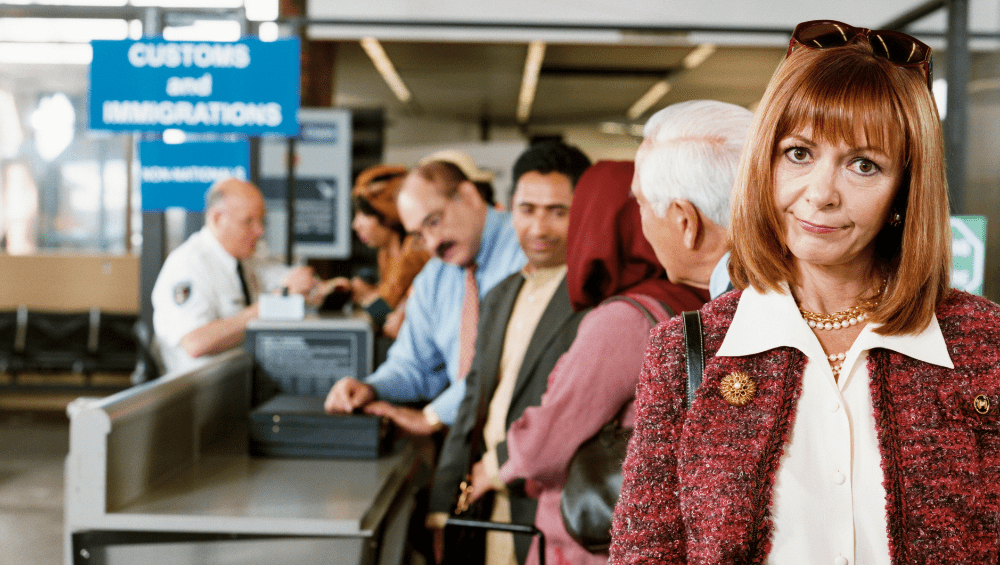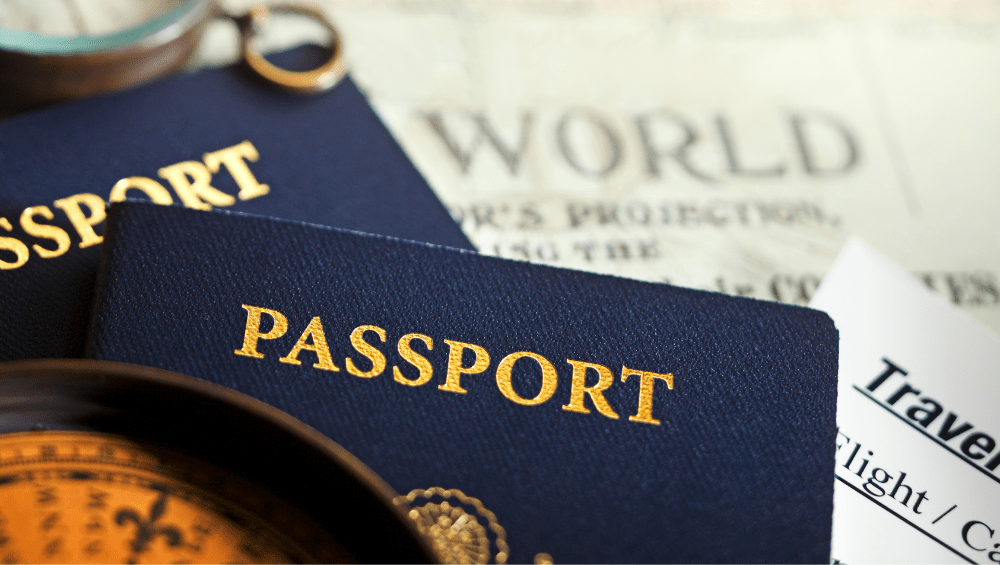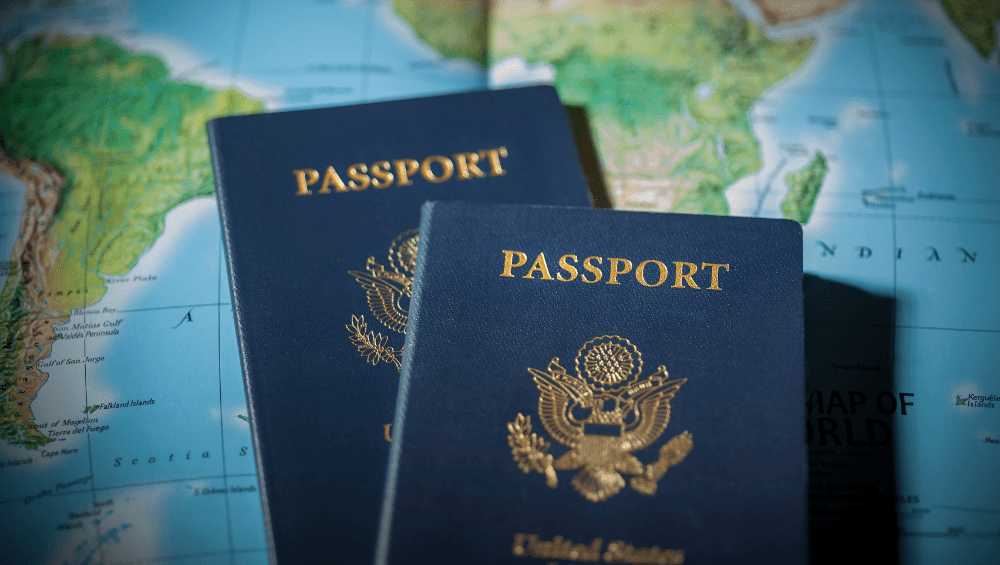Table of Contents
Are you a frequent traveler looking for an easy way to make your travel experience more enjoyable? Before you even get on the plane, there are many ways that can help streamline the immigration process – from applying for TSA Precheck® and Global Entry to knowing what to do if your passport gets lost or stolen.
In this blog post, we will break down all of the details so that you can make informed decisions about your next trip. Knowing these tips and tricks could be invaluable in helping advance through immigration with ease while saving time and energy. Keep reading to learn all about Global Entry, TSA PreCheck®, and how you can prepare yourself in case of passport loss while traveling!

What is Global Entry & How Does it Benefit You
Global Entry is a program designed to make international travel smoother and more efficient. It allows frequent travelers to bypass long lines at immigration and customs, which can save a significant amount of time. To participate in Global Entry, travelers must submit an online application, undergo a background check and an interview, and pay a fee.
Once approved, they are issued a Global Entry card that can be used at airports around the world. In addition to the time-saving benefits, Global Entry also includes TSA PreCheck, which allows travelers to use expedited security lanes at airports in the United States. Overall, Global Entry is a great option for anyone who travels frequently and wants to make the airport experience as hassle-free as possible.
Timeline & Cost of Global Entry
The fee for the Global Entry program is $100 and it lasts for five years. It can be paid with a credit or debit card, or you may also be eligible to pay using miles from select airline loyalty programs. Additionally, many premium credit cards include a statement credit to cover this fee.

TSA PreCheck® – What is It & How Do You Sign Up
Are long TSA lines and security checks a hassle for you? Then you may want to consider signing up for TSA PreCheck®. This expedited screening program allows approved travelers to breeze through security without having to remove their shoes, laptops, liquids, or belts. TSA PreCheck® costs $85 for five years of enrollment, and the application process involves an online application, an in-person appointment, and a background check. Once enrolled, travelers can take advantage of expedited security lines at over 200 airports across the United States. Say goodbye to long lines and hello to stress-free travel with TSA PreCheck®.
Timeline & Cost of TSA PreCheck®
TSA PreCheck® is another program that helps make air travel quicker and more convenient by allowing travelers to use expedited security lanes at airports in the United States. To participate in TSA Precheck®, travelers must submit an online application, undergo a background check and an interview, and pay a fee of $85. Approved applicants receive a Known Traveler Number that can be used to access the expedited security lanes.

Benefits of Global Entry & TSA PreCheck®
If you’re a frequent traveler, you know that the lines at the airport can be a major headache. That’s where Global Entry and TSA PreCheck® come in! These programs allow you to breeze through security checkpoints without having to remove your shoes, belt, or jacket. You’ll also be able to keep your liquids and electronics in your bag, saving you time and hassle.
And if you have Global Entry, you’ll be able to skip the long lines at customs when returning to the United States. Plus, having either of these programs can make you eligible for expedited screening in other countries. If you’re tired of waiting in long lines at the airport, you should definitely consider applying for Global Entry and TSA PreCheck®.
The Difference Between Global Entry & TSA PreCheck®
As frequent flyers know, security checkpoints can be a dreaded part of the airport experience. Fortunately, there are programs available that can make the process much smoother. Two of the most popular are Global Entry and TSA PreCheck®. While they may sound similar, there are important differences between the two programs.
Global Entry is a Customs and Border Protection government program that allows faster clearance through the airport for passengers with pre-approved, low-risk status. TSA PreCheck®, on the other hand, is a program managed by the Transportation Security Administration that provides expedited screening through security checkpoints. While both programs can save travelers time and hassle, it’s important to know which program is best suited for your travel needs.
Renew Global Entry or TSA PreCheck® Membership
If you’re a frequent traveler, you know how time-consuming the airport security process can be. That’s where programs like Global Entry and TSA PreCheck® come in – they allow for expedited screening and can save you a lot of time. But what happens when your membership expires?
It’s time to renew! With Global Entry, you can skip long lines when entering the United States, and with TSA PreCheck®, you can breeze through security without taking off your shoes or unpacking your liquids. The renewal process is quick and easy, ensuring that you don’t miss out on the benefits of these programs. So don’t hesitate – to renew today and make your travel experience a bit more enjoyable.

Passport Facts 101 – What You Need to Know
A US Passport is perhaps one of the most important documents a person can possess. It is a gateway to the world, a symbol of your identity, and a testament to your travels. While passports may look similar, not all are created equal. There are different types of passports, each with its own set of limitations and privileges.
So, what do you need to know about passports?
- Make sure you apply for the right type of passport.
- Keep in mind that passports have expiry dates and need to be renewed well in advance of expiration.
- Never underestimate the weight of your passport – it can make or break your travel plans.
Now that you are armed with these passport facts, you can confidently jet set off to your next adventure.
Types of Passports & Restrictions of Each
Passports are essential documents that allow individuals to travel across borders. There are several types of passports available, each with its own unique set of restrictions. For instance, diplomatic passports are issued to individuals who represent their country in foreign affairs and are granted immunity from prosecution.
On the other hand, regular passports have varying levels of access depending on the issuing country and may limit travel to certain regions. There are also special circumstances such as refugee or emergency passports that are issued to individuals in exceptional situations. Understanding the different types of passports and their respective restrictions is crucial for smooth international travel.
These are the types of US Passports:
- Regular passport: The most common type of US passport. Allows for international travel to most countries and regions.
- Diplomatic passport: Issued to individuals who represent their countries in foreign affairs, such as diplomats or government officials.
- Official passport: Issued to those traveling on official business of the US government. Not available for personal travel.
- Refugee/emergency passport: Used in exceptional circumstances, such as refugee status or an emergency situation in which a regular passport would not be sufficient.
- Limited validity passport: Used for a specific purpose, such as job relocation or temporary study abroad programs. Valid only for the duration stated on the document.
- Emergency limited validity passport: Issued when an individual needs to travel in a hurry, such as for medical emergencies or repatriation.
No matter what type of passport you possess, understanding the restrictions and limitations of your document is key to successful international travel. Do your research before heading abroad and make sure you have all the necessary documents in order.
Documents Needed for a Passport Application
Applying for a passport can be a lengthy process, so it is important to know what documents you will need before beginning the application. The documentation required for a US passport application varies depending on the type of passport being applied for and the age of the applicant. In general, however, most applicants will need at least two forms of identification, proof of US citizenship, and payment for fees.
- Two Forms of Identification: These must include one primary form and one secondary form from the list provided by the Department of State. Examples of primary forms include a driver’s license or state ID card, government-issued birth certificate, etc., while examples of secondary forms include social security card or voter registration card.
- Proof of U.S. Citizenship: Acceptable documents for this include birth certificates, consular reports of birth abroad, naturalization certificates, and more.
- Payment for Fees: The passport fee varies depending on the type of passport you are applying for and must be paid at the time of application. This can be done via check or money order payable to the Department of State or via credit/debit card in person or online.
By familiarizing yourself with all the necessary documents before beginning your passport application, you will save yourself a lot of time and hassle in the long run. Following these steps can help ensure a smooth and successful experience when applying for a US passport!
Cost of a US Passport
A US passport will cost you depending on a few different factors. The type of passport—whether it’s your first, whether it is an adult or child passport, and if you are renewing—will all affect how much you pay. Generally speaking, the cost for a new adult passport book is $110, while a new adult passport card costs $30. Renewal fees range from $60 to $110 for adult passports.
Children under 16 years old have different fees and should refer to the State Department’s website for more information. Applicants must also pay a processing fee when applying for a new or renewed passport that can range from $25 to $35 depending on where you submit your application (online or in person). Additionally, you may also be required to pay for passport photos and/or expedited shipping if you are in a rush. With all the costs associated with obtaining a US passport, it’s important to plan ahead and budget accordingly.
What to Do if You Lose Your Passport Before Traveling
Losing your passport before a planned trip can be a nightmare scenario that no one wants to deal with. However, it’s important to remember that it’s not the end of the world. The first thing you should do is remain calm and think through your options. Contact the nearest embassy or consulate to report the loss and request a replacement.
Make sure to also alert your airlines and accommodations of the situation. It’s also a good idea to make copies of all important documents and keep them in a separate location from your passport. While losing your passport may add some stress and delays to your travel plans, with the proper steps and mindset, it can be resolved with minimal disruption to your trip.
What to Do if You Lose Your Passport While Abroad
Losing your passport while abroad can be a daunting experience, but it’s essential to stay calm and take immediate action. The first step is to report the loss or theft to the US embassy or consulate at the earliest opportunity. They will provide you with a replacement passport, but it may take some time to process, so it’s vital to plan accordingly. If you are not a US citizen, then you can reach your embassy or consulate.
You may need to change your travel plans or extend your stay, so keep that in mind. In the meantime, you should also take steps to safeguard your identity and personal information. Notify your bank, credit card companies, and any other institutions that have your information to prevent identity theft. Losing your passport while abroad may feel like a nightmare, but by following these steps, you’ll be back on track in no time.
Tips for Keeping Your Passport Secure While Traveling
As exciting as traveling can be, it’s important to always keep your passport secure. Losing or having your passport stolen while abroad can be a nightmare, and could potentially ruin your trip. There are a few key tips to help ensure your passport stays safe while you’re on the go. Firstly, always carry it with you in a secure place, such as a money belt worn close to your body, or a zipped pocket in a bag that you keep close to you at all times.
Secondly, make copies of your passport and keep them in a separate place, just in case the worst happens. Finally, be mindful of where you keep your passport when you’re not using it – never leave it unattended in your hotel room or other public places. By following these simple tips, you can keep your passport safe and enjoy a worry-free travel experience.
Lying on a US Passport Application
Falsifying information on a US passport application is illegal and punishable by law. If found guilty of lying for a US passport, an offender can face fines of up to $250,000 and/or imprisonment for up to 15 years. To obtain a valid US passport, applicants must provide accurate personal information such as name, date of birth, home address, etc., which must match with other official documents such as birth certificates or driver’s licenses.
It’s important, to be honest, and accurate when completing a US passport application, as any false information can lead to legal charges and penalties. It might seem tempting to lie for a passport in order to expedite the process, but this is never recommended—if you do not meet the requirements for a passport, work with your local embassy or consulate instead of attempting to deceive them. By following the proper steps and having the right mindset, it’s possible to obtain your US passport without resorting to lying.

Global Entry, TSA PreCheck®, and Passports
All in all, Global Entry and TSA PreCheck® can make traveling much easier and more enjoyable by eliminating lengthy lines and hassles. With the added benefit of being able to get through security quicker, you can also have peace of mind knowing that your passport is safe and secure thanks to these programs. By following the tips outlined in this article for keeping your passport secure while traveling internationally, you can ensure that you have a successful journey. At the end of the day, both Global Entry and TSA PreCheck® provide travelers with remarkably helpful services that should be taken advantage of whenever possible, regardless of whether it is necessary for international travel or not.

Discover the Ultimate “Surviving a Long-Haul Flight Guide”
Whether you’re jetting off to a distant paradise, exploring a vibrant city, or visiting loved ones on the other side of the world, we know that surviving a long-haul flight is no small feat. But fear not, wanderlust seeker, because we have the ultimate solution to make your journey an absolute breeze!
Don’t let a long-haul flight be a roadblock to your travel dreams. With our “Surviving Long-Haul Flight Guide,” you’ll be equipped with the wisdom and knowledge to conquer the skies and make every moment of your journey count.
Download your copy of “Surviving a Long-Haul Flight Guide” and unlock the secrets to conquering those marathon flights like a pro!



